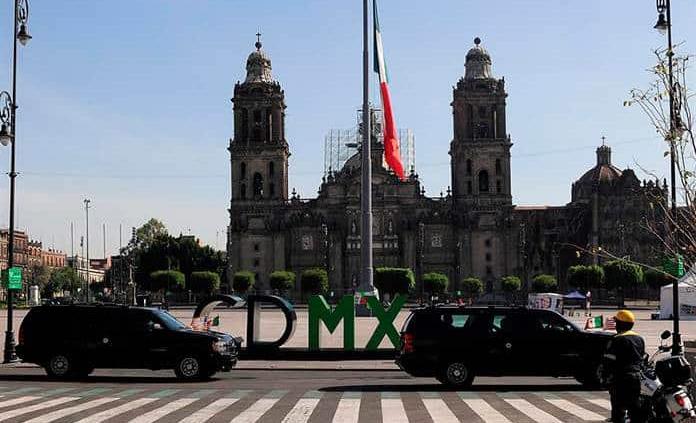By Inés Amarelo, EFE
RIO DE JANEIRO, BRAZIL – Morena, the party of President López Obrador, collapsed in the elections in Mexico City, a traditional bastion of the left, winning only 7 of the 16 mayoralties that make up the capital.
As if it were the Berlin Wall, Mexico City has been divided between east and west after the June 6 elections. While one side of the city remains loyal to the ruling party, the other opted for the opposition.

“There are more people with many shortages (in the east of the city) and in Movimiento Regeneración Nacional (Morena) we have seen a lot of support,” Estela, a woman from the Tlahuac mayor’s office, told Efe on Wednesday, in the vicinity of the place where just over a month ago there was a subway accident that left 26 dead and which is being investigated for structural failures.
She represents the many inhabitants of the eastern zone of the Mexican capital who voted for the party of President Andrés Manuel López Obrador in last Sunday’s mid-term elections, the largest in the country’s history in terms of the number of posts up for election.
“There are many people in need, and I understand that they want to concentrate on that sector, but they leave aside the rest of the population,” considered Valeria, a young woman walking through the office of Mayor Miguel Hidalgo, which was previously governed by Morena but now opted for the opposition.
Read also: Mexico elections – President López Obrador juggles the ults to declare victory
The city was divided between east and west, red and blue, representing, respectively, Morena and the opposition coalition Va por México, formed by the conservative National Action Party (PAN), the Institutional Revolutionary Party (PRI), and the leftist Party of the Democratic Revolution (PRD).
Since election night, images have proliferated on social networks reflecting the capital city map divided into two colors. For experts, the electoral polarization was, to a large extent, the cause.
“To me, it seems worrying that (the political class) classifies into good and bad, rich and poor, fifís (conservatives) and chairos (progressives). We naturalize this division,” Carolina del Ángel, professor at the Sociology faculty of the National Autonomous University of Mexico (UNAM), told Efe.
Since the arrival of Morena to the Presidency and the mayoralty of the city (with Claudia Sheinbaum) in 2018, social programs were one of its biggest focuses.
Luis, a neighbor of Iztapalapa, considered that the most positive thing about Morena “is that it is helping the poorest people,” he said. “For 30 years, we had governments that did not take the people into account, and now (…) Morena is supporting the people who really need it,” he continued.
Read also: Mexico elections – Ghosts of the past haunt a united opposition against López Obrador
For his part, a man from the well-to-do Polanco neighborhood, also named Luis, considered that Morena’s loss of mayoralties is related to the need for more specific policies.
“With this change, I believe that the proposal is that politicians should be more prepared, that they should be closer to the citizens. Not only with very generic proposals, but more specific ones,” he opined.
Different needs
However, Del Angel considered that the demands of these two areas of the city are very different and that the vote is the result of which ones the authorities satisfy or not.
“People ponder: ‘Do I need a street without potholes? I don’t have a car, I don’t need that, I need something else.’ The needs are different, so the incentive is different, and that is where social programs play an important role,” he said.
He explained that social programs become “partisan” and generate a feeling of “debt” in part of the population to whom they are dedicated, which can be reflected in the vote.
Furthermore, in his speeches López Obrador, who played a leading role in the recent elections even though the Presidency was not at stake, and the opposition make frequent references to terms which, for Del Angel, only deepen polarization.
And this was reflected in the ballot boxes, the professor said, after several years of observing great polarization and violence in social networks.
Memes with danger
Likewise, the most shared images on social networks in recent days referring to the capital division were considered by the philosopher and columnist for The Washington Post Fernando Bustos, as a sample of the “classism” that still survives in Mexican society.
Memes with a communist symbol on the area where Morena won, comparisons with the Berlin Wall or the indication that they pay taxes in the West and in the East receive subsidies are “dangerous”, indicated the expert.
“Behind this comicality, violence can be produced towards an ‘other’ that generally has been historically violated or precarized.”

